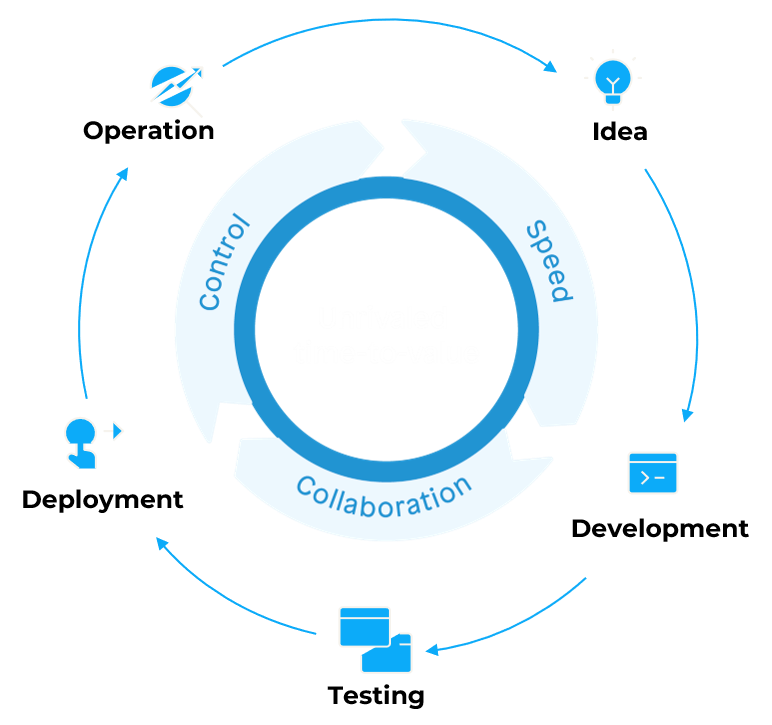Learn how Low Code simplifies the migration of legacy systems.
The migration of legacy systems can seem a daunting challenge for many organisations. However, the use of technology Low Code can simplify the process of developing new customised business applications to replace, complement or enhance existing systems.
In this article, we will explore the types and challenges of migrating legacy systems and how Low Code technology can streamline the development of new enterprise applications to replace, complement or enhance existing systems.
Types of legacy migration projects
There are two main types of legacy migration projects: direct migration and business transformation.
- Direct migration: These projects are usually initiated by the IT department due to the need to upgrade or replace the underlying infrastructure or technology. This is often due to cost reasons or technological obsolescence. In these cases, the main objective is to rebuild the existing system directly, without the need for significant changes on the business side. A new system is simply sought that allows the same tasks to continue to be performed as before.
- Business transformation: Most migrations are business transformation initiatives driven by the business. These applications are intended to replace legacy systems that do not adequately support business processes or do not provide the desired user experience. While these projects require new functionality, they must also maintain current processes. Within the business transformation category, we can identify two types of systems:
- Migrations of core systems: These are larger projects, built by the central IT department, such as custom portals and ERP systems. These applications require scalability, performance and migration of complex legacy databases.
- Migrations of non-core systems: These are smaller applications, originally built by business departments using tools such as Microsoft Access, SharePoint or Lotus Notes. The main criteria for successfully migrating these systems are business enablement, centralised governance and simple data migration.
Challenges
- Lack of flexibility: One of the biggest challenges in migrating legacy systems is to build a system that is flexible enough to adapt to future changes. The last thing IT wants is for the new system to become the legacy system of the future. Low Code platforms enable organisations to use a modern application architecture that fosters agility by leveraging microservices. Look for a platform that facilitates the creation of standalone applications and services that can be easily combined and shared, and that allows for rapid and frequent changes so that the system evolves and adapts to new business needs.
- Critical applications that do not meet scale requirements: Many core legacy systems are not designed to handle large volumes of data or large numbers of concurrent users. Migrating these applications to a Low Code platform enables scalability and performance, as the applications run on cloud infrastructure and benefit from the resources and elasticity it offers.
- Risk of loss of data and functionality: During the migration of legacy systems, it is essential to ensure that all critical data and functionality is transferred correctly. Low Code platforms offer tools and capabilities to migrate data smoothly and validate data integrity after migration.
Advantages
Low Code platforms offer a number of key benefits to speed up the migration of legacy systems:
- Increased speed of development: Low Code platforms allow developers to create business applications more quickly using a visual interface and pre-defined components. This reduces development time and speeds up the migration process.
- Increased collaboration between teams: By providing an intuitive and visual interface, Low Code platforms encourage collaboration between development teams, end users and domain experts. This ensures that everyone involved can participate in the migration process, which improves the quality and acceptance of the final system.
- Flexibility and adaptability: Low Code platforms allow for quick and frequent changes to applications without requiring extensive programming. This makes it easier to adapt the system as business needs evolve and minimises the risk of the system becoming a legacy system in the future.
- Easy integration with existing systems: Low Code platforms are designed to integrate easily with existing systems, making it easy to migrate data and connect to other enterprise systems.
- Scalability and performance: Applications developed on a Low Code platform run on cloud infrastructure, enabling scalability and performance suitable for handling large volumes of data and concurrent users.
Conclusion
Legacy application migration projects come with their own set of challenges, from ensuring operational efficiency to improving the customer experience and collaborating effectively. However, by leveraging Low Code technology, organisations can overcome these challenges and streamline the development of new customised business applications.
The platforms of Low Code enable faster development, seamless integration with existing systems and cross-departmental collaboration. They enable business users to actively participate in the development process, promote agility and flexibility, and facilitate data migration from legacy systems to modern databases.
With the right approach and tools, organisations can successfully migrate from legacy systems, improve operational efficiency, enhance the customer experience and drive digital transformation. Adopting the technology of Low Code opens up a world of possibilities for organisations looking to modernise their systems and stay ahead in today's rapidly evolving business landscape.
If you want to know the full capabilities of a platform Low Codedon't miss our Webinar free of charge on 29 June.o. Increased speed, reduced costs, expanded human capabilities, the opportunity for new breakthroughs and much more. Discover all the advantages of Low Code from Exceltic + Mendix.







